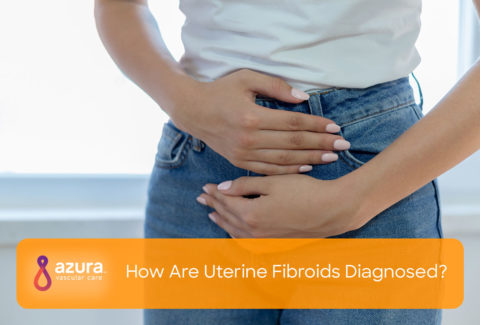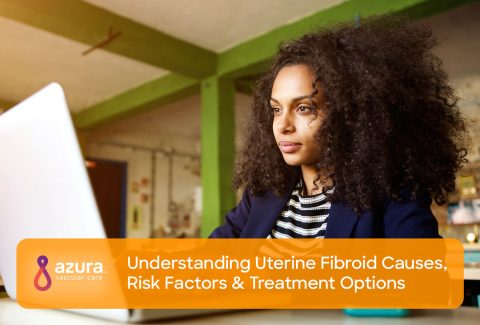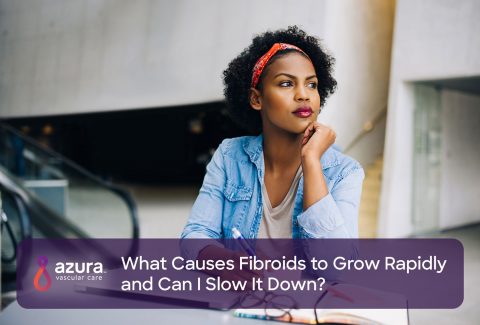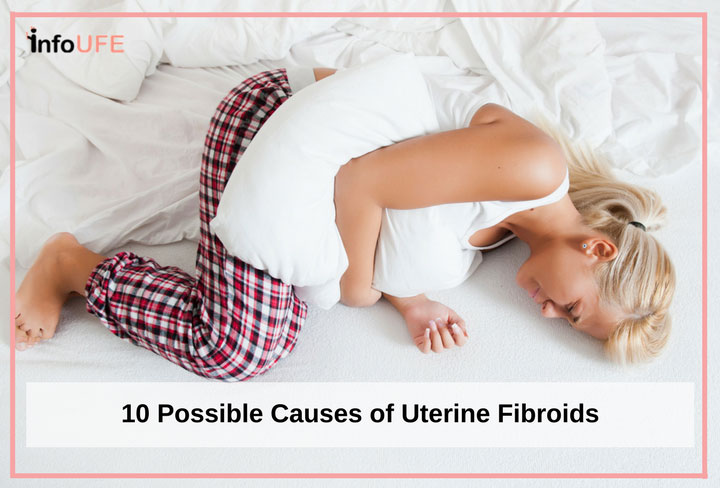
“What causes uterine fibroids?” is a common question to ask when faced with the possible or actual diagnosis of uterine fibroids. Uterine fibroids are non-cancerous tumors that develop in the muscle of the uterus. Fibroids are quite common, impacting up to 70% of women by the age of 50.[i] Many women wonder if anything can be done to prevent or slow the growth of uterine fibroids. Researchers are learning more about the causes of uterine fibroids and have identified estrogen, progesterone, growth hormones, genetics, and misplaced cells present in the body before birth as potential contributors to their development and growth.[ii] Most of these factors cannot be easily changed, but it’s important to remember that there are effective treatments for uterine fibroids, including medication, surgery, or a minimally invasive treatment option known as uterine fibroid embolization.
What Causes Uterine Fibroids?
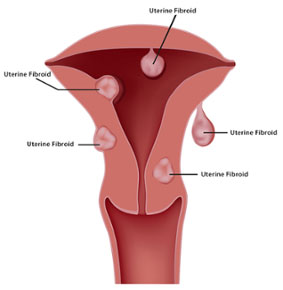 1. Having Less Than Two Children
1. Having Less Than Two Children
It appears that the more children you have, the less likely you are to develop fibroids. It’s not clear to researchers just why this is, and it’s important to note this does not mean women should have more children just to avoid fibroids.[i]
2. Drinking Alcohol
The Black Women’s Health Study noted that in black women consuming alcohol, particularly beer, there is an association with the development of uterine fibroids. Consider reducing your intake of alcohol, especially beer to once per week or less.[i]
3. Not Eating Enough Fruit
We all know we should eat a variety of fruits and vegetables every day.[ii] In a study of dietary habits, researchers found that at least 2 servings of fruit a day, especially citrus fruits, was associated with a lowered risk of uterine fibroids.[iii] If you’re not consistent with eating fruits and vegetables frequently, perhaps just knowing you might be lessening your chance of developing fibroids will help you want to eat them more regularly.
4. Starting Menstruation Early
Fibroids are sensitive to hormones, particularly estrogen. This may explain the fact that women who begin menstruating before the age of 11 are more likely to develop fibroids compared to women who begin menstruating after the age of 13.[iv] Of course, there is little you can do to change the age at which you started menstruating.
5. Vitamin D Deficiency
Vitamin D is a fat-soluble vitamin that is present in certain foods, particularly dairy. Our bodies produce vitamin D when our skin is exposed to sunlight.[v] Research has shown that vitamin D has the ability to diminish the growth of cells and regulate the immune system. Vitamin D also limits the production of fibrous tissue by fibroid cells. It is important to make sure you’re getting an adequate amount of vitamin D.
6. Prenatal Exposures
While nothing can be done about what you were exposed to while in utero, an understanding of what may be leading to your development of fibroids is still helpful. The following are strongly linked to the development of fibroids:
- Exposure to diethylstilbestrol (DES), a man-made synthetic form of estrogen given to women from 1938 to 1971 as a treatment for infertility and premature deliveries.[vi]
- Maternal pre-pregnancy diabetes or gestational diabetes.[vii]
- Being part of a multiple pregnancy, such as being a twin or triplet.[ix]
7. Exposure to Childhood Abuse
It seems logical that being exposed to childhood abuse is tied to physical and mental health problems. Studies have shown a connection to the development of uterine fibroids and exposure to abuse early in life.[vii] While nothing can be done to change what happened in the past, one of the best things you can do for yourself is to take care of your physical and emotional health.
8. Using Hair Relaxers
Hair relaxers may contain phthalates, a group of chemicals that are considered to be hormonally disruptive. Detectable levels of phthalates found in urine are associated with uterine fibroid risk. You might consider not using hair relaxers or using them infrequently.[vii]
9. Experiencing Major Life Stresses
Stressful major life events, such as the loss of a child or spouse, divorce, or the birth of a first child, are associated with fibroids.[vii] The stress is thought to lead to changes in hormone levels that encourage the development of fibroids. Taking care of yourself by exercising, getting enough sleep, and eating right could better your emotional and physical well-being and may be helpful for your fibroids as well.
10. Genetics
African American women are more likely to develop fibroids than Caucasian women. By the age of 35, 60% of African American women will have fibroids, compared to 40% of Caucasian women.[viii] While you are not able to change your genetics, you can focus on the other causes of uterine fibroids that you do have some control over.
RELATED: Signs and Symptoms of Uterine Fibroids
To decrease your risk of developing fibroids, focus on eating a healthy diet and managing your stress. If you have other concerns about possible causes of uterine fibroids, please discuss them with your doctor.
Sources:
i Khan, A.T., M. Shehmar, and J.K. Gupta, Uterine fibroids: current perspectives. Int J Womens Health, 2014. 6: p. 95-114.
ii NIH – https://www.nichd.nih.gov/health/topics/uterine/conditioninfo/Pages/causes.aspx
iii Wise, L.A., et al., Risk of uterine leiomyomata in relation to tobacco, alcohol and caffeine consumption in the Black Women’s Health Study. Hum Reprod, 2004. 19(8): p. 1746-1754.
iv Fruits and veggies more matters – http://www.fruitsandveggiesmorematters.org/wp-content/uploads/UserFiles/File/pdf/resources/cdc/HowMany_Brochure.pdf
v Wise, L.A., et al., Intake of fruit, vegetables, and carotenoids in relation to risk of uterine leiomyomata. Amm J Clin Nutr, 2011. 94: p. 1620-31.
vi Velez Edwards, D.R., Baird, D.D., Hartmann, K.E., Association of age at menarche with increasing number of fibroids in a cohort of women who underwent standardized ultrasound assessment. Am J Epidemiol, 2013. 178(3): p. 426-433.
vii Catherino, W.H., Eltoukhi, H.M., Al-Hendy, A., Racial and ethnic differences in the pathogenesis and clinical manifestations of uterine leiomyoma, 2013. 31(5): p. 370-379.
viii http://www.cancer.org/cancer/cancercauses/othercarcinogens/medicaltreatments/des-exposure
ix D’Aloisio, A.A., et al., Early-life exposures and early-onset uterine leiomyomata in black women in the Sister Study. Environ Health Perspect, 2012. 120(3): p. 406-412.
x Zimmermann, A., et al., Prevalence, symptoms and management of uterine fibroids: An international internet-based survey of 21,746 women. BMC Women’s Health, 2012. 12: p. 6-6.

